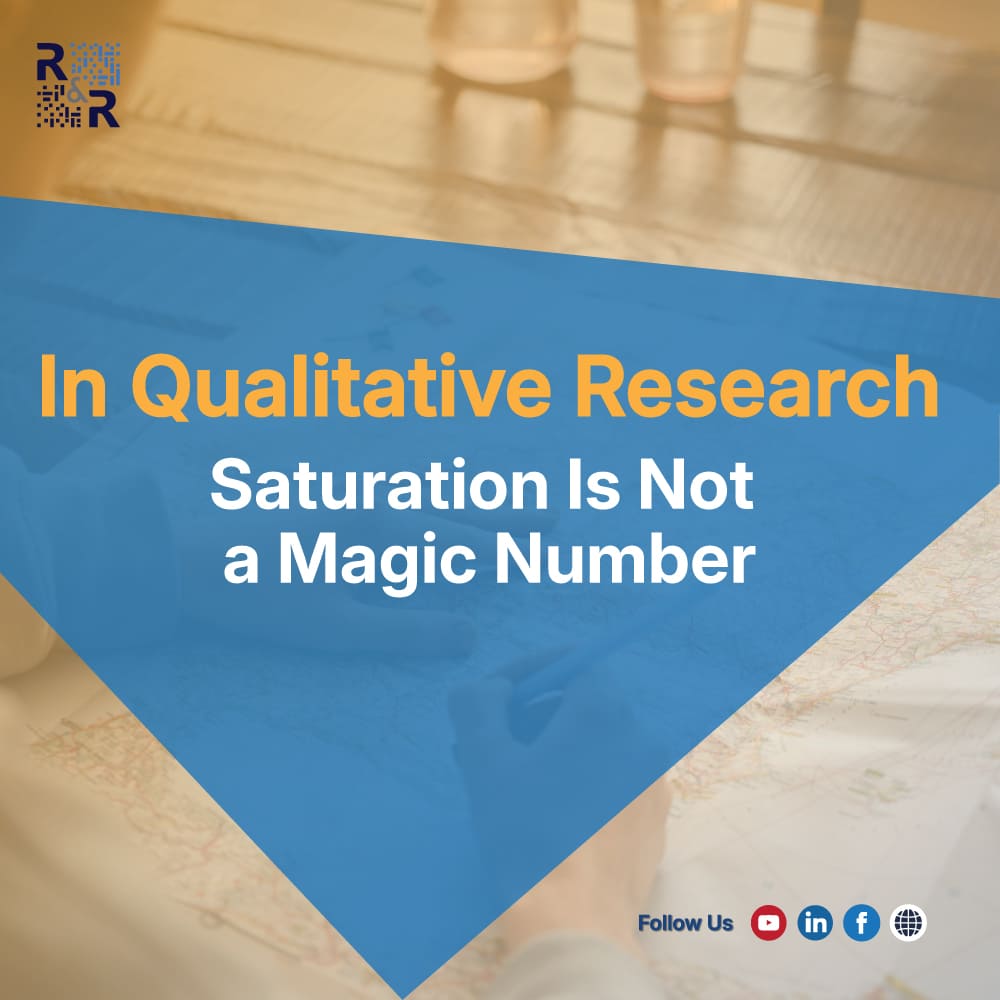In qualitative research, data saturation is one of the most cited yet misunderstood concepts. Too often, researchers treat saturation as a “magic number” — usually 12 or 15 interviews — without considering research design or analytical depth.
At Research & Report, we regularly review manuscripts and supervise doctoral work where saturation is misapplied. This article unpacks the misconceptions around saturation and offers guidance for using it rigorously and transparently.
The Myth of the “Saturation Number”
Many studies misquote Guest et al. (2006), who found thematic saturation after 12 interviews. But that study was:
- Narrow in scope
- Focused on a homogeneous group
- Based on deductive thematic analysis
This does not mean all studies reach saturation at 12 interviews. Instead, saturation depends on research questions, context, and data variation.
Different Types of Saturation (Often Ignored)
There are multiple forms of saturation, but most studies never clarify which one they mean:
- Code Saturation – No new codes appear.
- Meaning Saturation – No deeper insights about existing codes.
- Theoretical Saturation – In grounded theory, categories are fully elaborated.
- Data Saturation – Broadly, “no new themes emerging.”
Without clarity, simply stating “we reached saturation after 15 interviews” weakens credibility.
Common Missteps and Their Consequences
1. Pre-Determined Sample Sizes
Many authors set a sample size in advance and claim saturation afterward. This retroactive reasoning undermines methodological trust.
2. No Documentation
Few studies document the point of saturation with memos, codebooks, or analytic notes. Editors view such claims as unverified.
3. Overlooking Heterogeneity
A homogeneous group may reach saturation quickly. But diverse or multi-site samples require more careful assessment.
4. Ignoring Epistemology
Different traditions treat saturation differently. Critical and interpretive paradigms often reject saturation as a positivist construct.
5. Stopping Too Early
Researchers sometimes stop when no new topics emerge, but before deep conceptual development. This limits contribution.
Rethinking Saturation: Best Practices
Saturation should not be a shortcut. It should be a dynamic and transparent process.
Practical Guidelines
Link saturation to analytical adequacy, not repetition.
Specify what kind of saturation you target.
Use analytic memoing to track when saturation occurs.
Justify your sampling with scope, variation, and theory.
Be reflexive about researcher positionality.
Final Thought
Saturation is not about when nothing new is said. It is about when further data no longer enriches categories or interpretations.
If your claim of saturation is not demonstrated, contextualized, or defended, it weakens your methodology and contribution.
At Research & Report, we help researchers move beyond superficial saturation toward analytic sufficiency—ensuring credibility with reviewers, doctoral committees, and global journals.
👉 Question for Readers:
How do you define and document saturation in your qualitative research? Share your strategies below.
References
- Guest, G., Bunce, A., & Johnson, L. (2006). How many interviews are enough? Field Methods.
- Saunders, B. et al. (2018). Saturation in qualitative research. Qual Quant.
- O’Reilly, M. and Parker, N. (2013) “Unsatisfactory Saturation”: A Critical Exploration of the Notion of Saturated Sample Sizes in. Qualitative Research, 13, 190-197.

